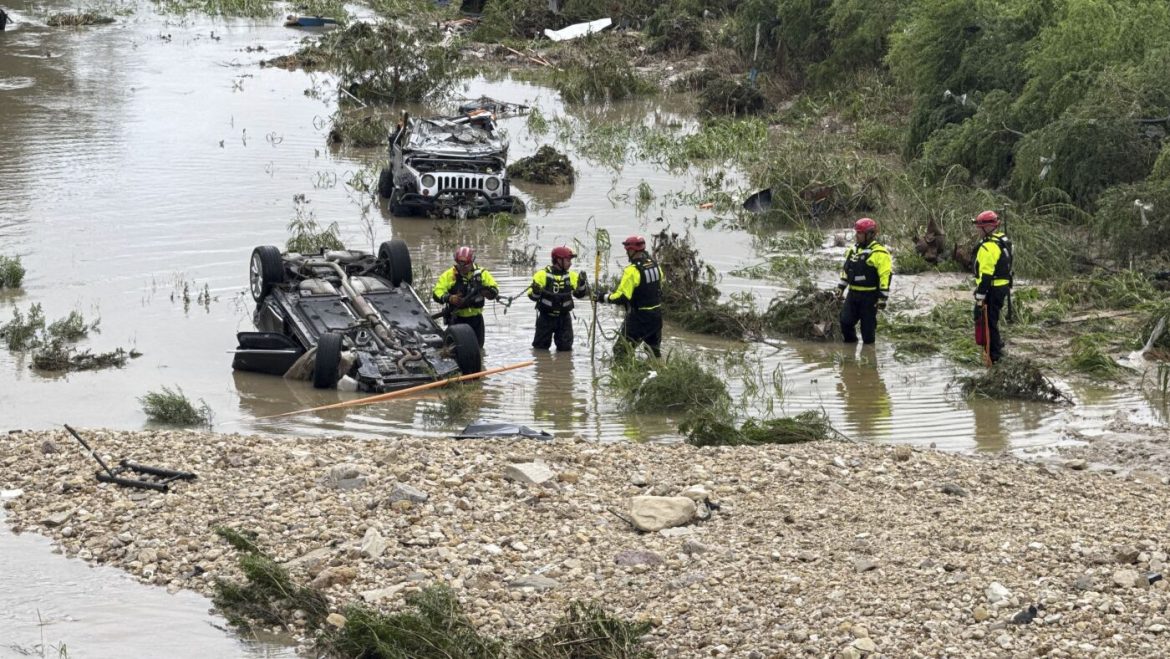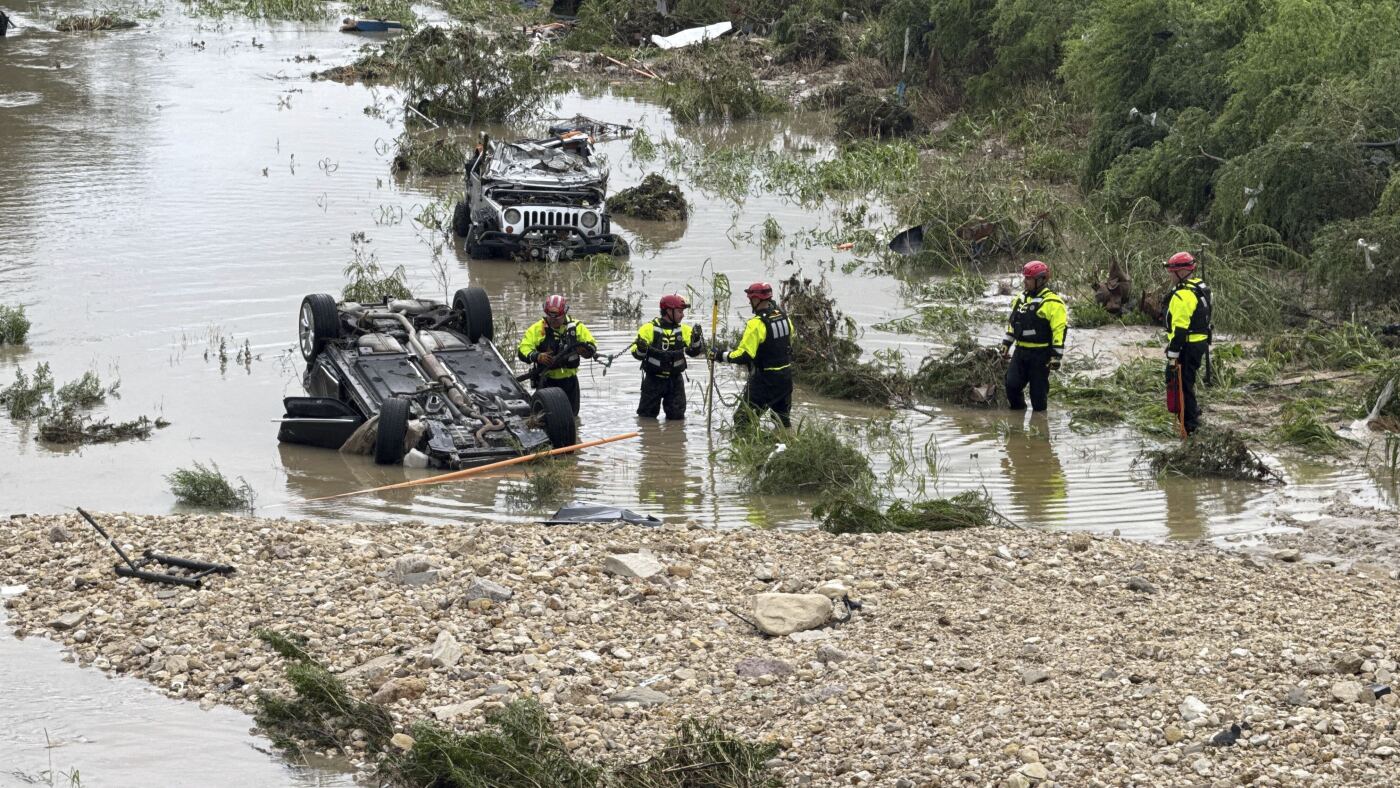The recent flash flooding in San Antonio, Texas stands as a stark reminder of the destructive power of sudden, intense rainfall events. Over the span of just a few hours, the city experienced more than seven inches of rain—equivalent to or exceeding a month’s typical precipitation—resulting in devastating flash floods that have left at least 13 people dead, many vehicles swept away, and widespread emergency responses throughout the community.
The Scale and Impact of the Flooding Event
San Antonio was hit by an extraordinarily heavy storm on a recent Thursday morning. Reports show rainfall totals exceeding 7 inches in under 24 hours, with some gauges noting amounts close to 8.5 inches in nearby Mico, Texas. This unprecedented deluge caused rapid water level rises, turning streets and highways into swift-moving rivers and overwhelming drainage systems not designed to cope with such volume and speed of runoff.
The flooding was not just a nuisance but catastrophic: dozens of vehicles were swept off roadways and into creeks or deep water, resulting in numerous water rescues. Emergency services responded to more than 70 water rescue calls, underscoring the breadth of the crisis. At the peak, 19 individuals were reported trapped in floodwaters, with first responders successfully rescuing many but also confronting heartbreak as 13 fatalities were confirmed.
Human Toll and Rescue Efforts
The San Antonio Fire Department and police were at the forefront of search and rescue operations conducted soon after the storm had passed. Tragically, 13 people lost their lives in this rapid-onset disaster, and several victims have been publicly identified, personalizing the community’s grief. The majority of deaths resulted from vehicles being swept away in floodwaters, highlighting the extreme hazard posed by driving during flash flood conditions.
Authorities also faced the immense challenge of locating missing persons amid murky, fast-moving waters and debris. At one point, several people were unaccounted for, causing widespread anxiety among families and the community. However, by the weekend following the event, officials confirmed that all previously missing individuals had been found, bringing some closure to anxious loved ones.
Geographic and Meteorological Factors
The flood’s severity was exacerbated by geography: San Antonio’s rivers and creeks swell rapidly during sudden heavy rains, compounding the risk for flash floods. The Perrin Beitel and Austin Highway areas were notably impacted, where water levels rose alarmingly within minutes, disrupting normal flow and trapping vehicles and residents alike.
Meteorologists characterized the event as a “freak downpour,” with rain intensities that overwhelm standard urban drainage infrastructure and natural waterways. The San Antonio International Airport recorded six inches in a single rainfall event—unprecedented in over a decade—underscoring the exceptional nature of the storm.
Community and Government Response
In the aftermath, the City of San Antonio issued public statements urging residents to exercise extreme caution during severe weather, reinforced a dedicated helpline (210-207-4817) through the San Antonio Police Department for those seeking missing persons or requiring assistance, and mobilized multiple agencies for continuous search, recovery, and cleanup operations.
Firefighters, emergency medical personnel, and law enforcement worked tirelessly through the night and into the weekend, engaging in water rescues and high water investigations. This robust response likely prevented further loss of life.
Broader Implications and Reflection
This tragic event sheds light on the vulnerabilities urban areas face amid increasingly erratic and extreme weather patterns, possibly reflecting broader climatic shifts. Rapid urbanization, impervious surfaces, and aging infrastructure intensify flash flood risks, making cities like San Antonio particularly susceptible.
The disaster also serves as a somber reminder of the critical need for public awareness regarding flash flood dangers. The common fatal scenario of being caught in a vehicle during a sudden flood illustrates the deadly traps water can set when underestimated.
Conclusion: An Urgent Call for Preparedness
The flash flooding in San Antonio left an indelible mark on the community, claiming 13 lives and shaking a city unprepared for such an extreme event in so short a time. As emergency responders continue their work, and as survivors and families grieve and rebuild, the event underscores the imperative for strengthened flood management, infrastructure resilience, and public education on responding to flash floods.
San Antonio’s experience is not isolated—communities worldwide face similar increasing risks—making this disaster a poignant case study in both the human costs of extreme weather and the urgent necessity for adaptive strategies that save lives and mitigate damage in the future.
—
Sponsor
Seeing news about the San Antonio flash flooding is indeed unsettling. If you’re looking for ways to help the community get back on its feet, perhaps updating your resume and seeking opportunities with local organizations can be a great start. Check out Super-Resume, a free resume builder with professional templates to showcase your skills and make a real impact during this critical time. With Super-Resume, you can create a standout resume and download it in multiple formats, making it easier to apply for roles where you can lend your support.


